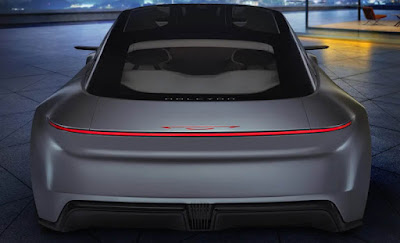Farewell Bids - Lamborghini, renowned for its groundbreaking designs and cutting-edge technology, is bidding adieu to one of its legendary models, the Aventador, paving the way for a new era of hybrid engines with the upcoming Revuelto model. Simultaneously, the Urus model embraces the best of both worlds with a blend of petrol and electric power, showcasing Lamborghini's commitment to innovation and sustainability.
 |
| The Lamborghini Huracán Super Trofeo Jota (STJ) marks the iconic supercar's final masterpiece, evolving from the Huracán STO with enhanced speed, performance, and exclusivity. (Picture from: Motortrend) |
Amidst these transitions, Lamborghini unveiled a final masterpiece, the Lamborghini Huracán STJ, also known as the Super Trofeo Jota. This limited-edition beauty, with only 10 units released, has garnered immense attention from automotive enthusiasts worldwide, symbolizing the pinnacle of Lamborghini's engineering prowess.
 |
| These include refined aerodynamics, with carbon fiber canards upfront and a reconfigured rear spoiler for optimized downforce. (Picture from: CarAndDriver) |
The Huracán STJ represents an evolution of the Huracan STO, boasting enhanced speed, performance, and exclusivity. What truly sets it apart is the prestigious Jota moniker, previously reserved for Lamborghini's top-tier models such Miura Jota, Diablo SE-30 Jota, and Aventador SVJ, adding a touch of heritage and significance to this exceptional vehicle.
 |
| The Lamborghini Huracán Super Trofeo Jota (STJ) offering various color options like Grigio Telesto with Nero Noctis accents. (Picture from: Supercars.net) |
Delving into its features, the Huracán STJ retains the core essence of the STO while incorporating bespoke enhancements from Lamborghini's racing division. These include refined aerodynamics, with carbon fiber canards upfront and a reconfigured rear spoiler for optimized downforce, resulting in superior track performance.
 |
| The Lamborghini Huracán Super Trofeo Jota (STJ) offering various color options like Blu Eliadi with corresponding colors, buyers are treated to a blend of style and performance. (Picture from: Supercars.net) |
Despite subtle alterations, such as a 10% increase in downforce and a transition to manual suspension adjustability, the Huracán STJ maintains its potent V10 engine, delivering a remarkable 631 horsepower. Coupled with new Bridgestone Potenza tires, the STJ offers unparalleled grip and handling, surpassing its predecessor's performance benchmarks.
 |
| These include refined aerodynamics, with carbon fiber canards upfront and a reconfigured rear spoiler for optimized downforce. (Picture from: CarAndDriver) |
Visually, the Huracán STJ boasts two captivating liveries, each complemented by luxurious interior detailing. Whether it's the Grigio Telesto with Nero Noctis accents or the Blu Eliadi with corresponding colors, buyers are treated to a blend of style and performance.
 |
| The Lamborghini Huracán Super Trofeo Jota (STJ) retains the core essence of the STO while incorporating bespoke enhancements from Lamborghini's racing division. (Picture from: Motortrend) |
In essence, the Lamborghini Huracán STJ represents the culmination of Lamborghini's legacy in automotive excellence, marking a poignant farewell to an iconic era. With its limited availability, unmatched performance enhancements, and timeless design, the STJ solidifies its position as a coveted collector's item, embodying the spirit of Lamborghini's racing heritage.
 As for the price, it's a realm of exclusivity reserved for the privileged few. Unless you're among the fortunate ones on Lamborghini's elite list, it's safe to say that this masterpiece comes with a hefty price tag, reflecting its unparalleled craftsmanship and status in the automotive world. *** [EKA | FROM VARIOUS SOURCES | LAMBORGHINI | CARSCOOPS | MOTORTREND | CARANDDRIVER | SUPERCARS.NET ]
As for the price, it's a realm of exclusivity reserved for the privileged few. Unless you're among the fortunate ones on Lamborghini's elite list, it's safe to say that this masterpiece comes with a hefty price tag, reflecting its unparalleled craftsmanship and status in the automotive world. *** [EKA | FROM VARIOUS SOURCES | LAMBORGHINI | CARSCOOPS | MOTORTREND | CARANDDRIVER | SUPERCARS.NET ]Note: This blog can be accessed via your smart phone.










































